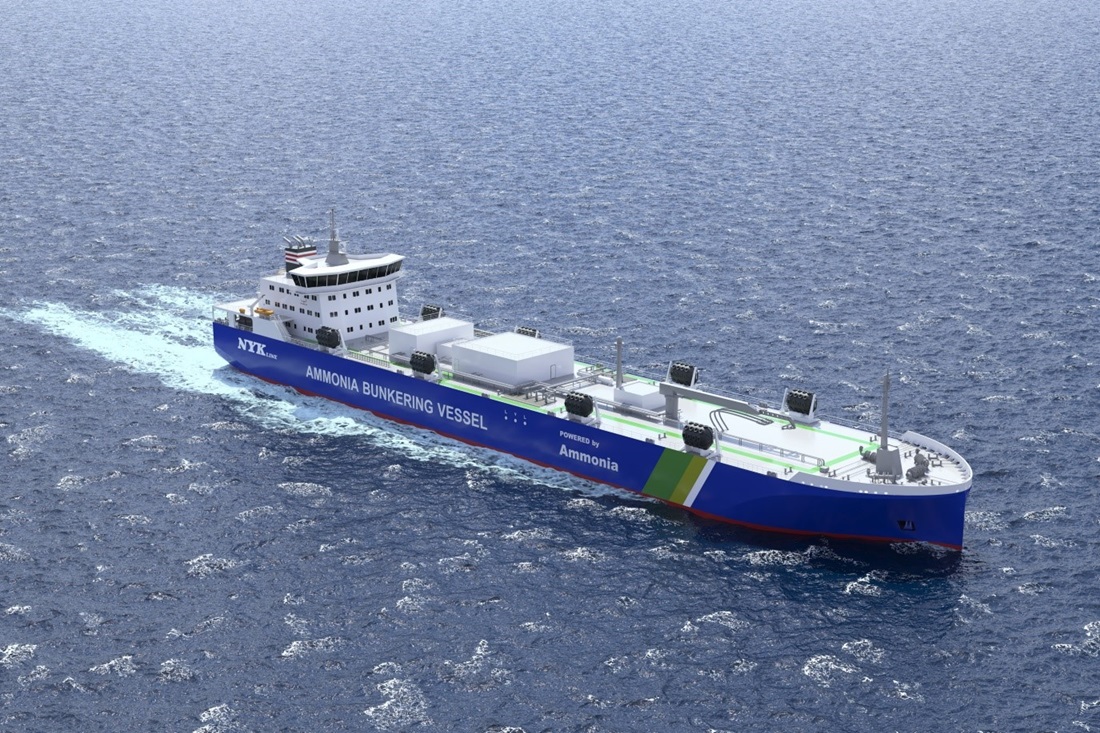An Approval in Principle (AiP) certificate has been obtained for an ammonia fuelled ammonia bunkering vessel designed through the collaboration of Nippon Yusen Kabushiki Kaisha (NYK) and its partner Seatrium of Singapore.
Seatrium subsidiary, LMG Marin provided the vessel design, which will now be submitted to the Maritime and Port Authority of Singapore (MPA) for evaluation. Through this latest initiative, the consortium aims to address the industry’s urgent need to decarbonise and create a viable value chain for ammonia as a marine fuel. This collaborative effort underscores a collective commitment to fostering a greener, more sustainable maritime industry. The AiP certification validates the vessel design’s compliance with stringent safety, technical, and environmental standards, and enhances the feasibility of ammonia as a future fuel.
Tsutomu Yokoyama, EO NYK Line, said: “This Approval in Principle represents a critical milestone in our efforts to accelerate the adoption of clean ammonia as a sustainable marine fuel. With the rich ammonia expertise of NYK and our partners, as well as the great technical capabilities of Seatrium, we are setting new benchmarks for safety and efficiency while paving the way for a cleaner maritime future.”
LMG Marin, which claims technical capabilities and proven track record in designing complex maritime systems, provided the hazard identification study (Hazid) for design validation. Throughout the concept design phase, safety philosophies on the safe use of ammonia for the ammonia fuelled engines in the engine room were developed to ensure compliance with the interim IMO guidelines for the safety of ships using ammonia as fuel, as approved by MSC109 in 2024.
The vessel design incorporates the ammonia fuel dual-fuel engines from IHI Power Systems and a bunkering boom by TB Global Technologies. The engines significantly reduce GHG emissions by using ammonia as a fuel. They are similar to those installed on the first commercial-use ammonia-fuelled tugboat, Sakigake, delivered in 2024. The bunkering boom features a high speed ammonia purging emergency release system (ERS), which enables a reliable and efficient disconnection between vessels in an emergency.
Aziz Merchant, EVP Engineering, Technology and New Product Development, Seatrium, and Chairman of LMG Marin, said: “We are honoured to contribute to this industry-leading initiative led by NYK and its partners. The use of ammonia as a non-fossil based marine fuel is a key distinction in this project. Collaborating on this visionary project reaffirms Seatrium’s commitment to advancing sustainability and supporting global decarbonisation goals.”
The design for the ammonia fuelled ammonia bunkering vessel will be submitted to the MPA for evaluation, showcasing Singapore’s role as an innovation hub in sustainable maritime solutions. This vessel, if brought to fruition, will be the first bunkering vessel of its kind. It will contribute significantly to Singapore’s marine decarbonisation efforts, creating a positive effect across the global maritime industry. The design is seen as an essential contribution to developing the infrastructure needed for ammonia bunkering, a crucial component in reducing GHG emissions in global shipping.
Image: Ammonia-Fuelled Ammonia Bunkering Vessel (AF-ABV) designed by LMG Marin (credit: Seatrium)



